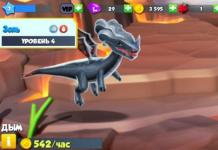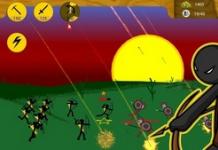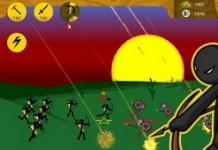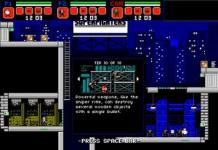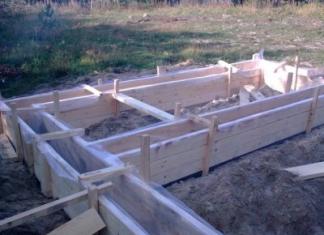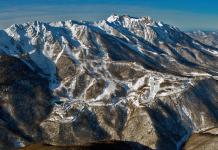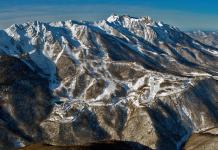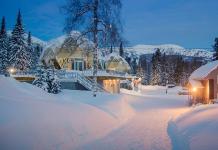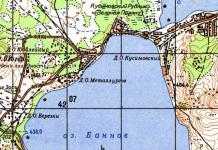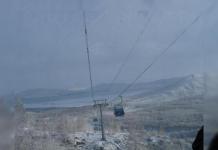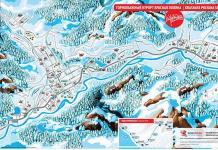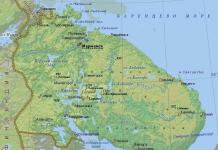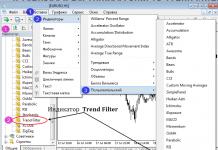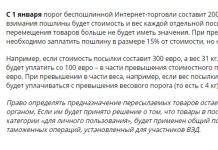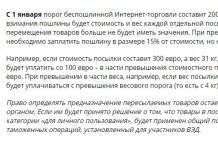The earth's crust is heterogeneous and consists of different structural elements. The study of the structure of the lithosphere (the solid shell of the Earth) is one of the tasks set by the science of geography. Shields are one of those elements. It is about them that will be discussed in this informative article.
The earth's crust and its structure
The main structural elements of the earth's crust are lithospheric plates, which can be continental or oceanic. These two types differ from each other in structure (cross-section): in the plates of the continental type there is a granite layer.
Platforms are called the most stable (in tectonic terms) parts of the Earth's lithospheric plates. At the same time, they act as cores (basis) for the continents. In addition to them, within the lithospheric plates, epiplatform and epigeosynclinal ones are also distinguished.
The platform is the most stable structure of the earth's crust, which was formed where powerful mountain systems existed hundreds of millions of years ago. Over time, they collapsed, and the surface in this place leveled off. Thus, a powerful and stable structure is formed - the foundation. In the future, sedimentary rocks begin to accumulate on it, gradually creating a powerful layer (cover).
All platforms that exist on Earth are divided into ancient (in the English-language literature they are often called cratons) and young. The map below shows the main (ancient) platforms of our planet. They are marked with a reddish tint.
The structure of the earth's crust is studied by the science of geography (Grade 7). Next, we will take a closer look at the structure of the platform.
Structural elements of the platform (geography, Grade 7)
The platform consists of two layers: the crystalline basement (underlies) and the sedimentary cover (covers the foundation).
In geological science, structures of four orders are distinguished, which make up any platform. Shield, slab, anteclise and syneclise are the main ones. In what follows, we will consider them. Familiarization with these structures is quite enough for the full development of the school course "Geography".
Shields are exits to the crystalline foundation of the platform. The dimensions of such exits can reach 1000 or more kilometers in length. As a rule, shields are typical for ancient platform structures.
Plates are vast areas of the platform that are completely covered by a sedimentary cover. Very often, young platforms are completely covered with such a cover. Therefore, they are also called plates.
Anteclises and syneclises are structures of the 2nd order. The anteclise is the name given to the gently sloping raised areas of the plates. A syneclise is a flat depression on a slab or, more rarely, within a crystalline shield.
In this article, we will consider the shields of the ancient platforms of Eurasia - Siberian and East European. However, before that, let's dwell on the question "what is a shield" in more detail.
Geography: shields are...
The concept of "shield" is widely used in geological science. The term was first used in Germany by Eduard Suess (in 1903).
The shield is an outcrop of a crystalline foundation within an ancient platform. Thus, Precambrian rocks come to the surface of the Earth, the age of which can reach 3.5-4 billion years. They, as a rule, are represented by granites, quartzites, gneisses, which are exposed over quite large areas.

Features of the structure of the shields
Shields are the main and most stable structures of the continents. As a rule, they are surrounded by belts composed of rocks of the Cambrian age. In the relief, shields are most often expressed as slightly convex plains or small hills.
The shields are surrounded by more mobile and mobile zones, in which mountain building processes were recorded relatively recently (by geological standards - 100-200 million years ago).
The most famous examples of shields on our planet are: Canadian, Ukrainian, Aldan, Baltic. Large deposits of ore minerals (copper, manganese, gold, nickel, etc.) are confined to these areas. Thus, powerful deposits of copper ores and apatites were discovered within the Aldan shield. The largest reserves in the world (Krivoy Rog basin) were found on the Ukrainian Shield.

History of formation and structure of the Siberian platform
The Siberian Platform is a large geological region occupying a huge area in the northeastern part of Eurasia. This is one of the oldest platforms on the planet, the foundation of which was formed in the Archaean. After that, it was covered more than once by the waters of the seas, as a result of which a powerful cover of sedimentary rocks was formed here.
The Siberian platform has clear boundaries on the surface of the Earth: the northern one is the southern slopes, the western one is the Yenisei valley, the southern border runs along the Stanovoy Range, and the eastern one - along the lower reaches of the Lena River.
The foundation of the Siberian Platform is composed of Archean and Proterozoic rocks, which are strongly folded. These are gneisses, amphibolites, schists, marble and others. Their age is quite solid: from 2.3 to 3.7 billion years. The sedimentary cover of the platform is composed of rocks of different ages. The northeastern end of the platform is characterized by intrusive rocks that form diamond pipes.
The Siberian platform is unusually rich in various mineral resources. There are large deposits of iron ores, mica, apatite, graphite. Significant reserves of gas and oil are confined to the sedimentary cover, as well as coal, diamonds, copper, nickel ores and gold.
Aldan Shield
The Aldan shield is a ledge of the crystalline basement within the Siberian platform. It is localized in its southeastern part and coincides in relief with the Aldan Highlands and the Stanovoy Range. In the south and west, the shield borders on the area of mountain building through a system of deep faults. In the northeast, it is overlain by a thick cover of sedimentary deposits of the Cambrian age.
According to the deposits (floors) of the ancient basement of the Aldan shield, one can trace the evolution of the earth's crust as a whole. Thus, gneisses, shales, marble and granulite quartzites occur in the lowest tier. The next floor is filled with sedimentary-volcanic rocks, zonal metamorphosed. The upper floor is represented by thick deposits of clastic and volcanic rocks, as well as large intrusions.
In different geological epochs, tectonic processes in the Aldan Shield became active many times. This happened in the Paleozoic, Middle Mesozoic and Cenozoic. This is one of the distinguishing features of this crystal shield.

Deposits of many minerals are associated with the territory of the Aldan shield. Thus, significant reserves of iron and copper ores, mica, apatite, kimberlite, coal, gold, and various semi-precious stones have been discovered and explored here.
The history of the formation and structure of the East European Platform
The East European Platform is one of the largest and most stable platforms of the modern earth's crust. It stretches from the Scandinavian Peninsula to the Ural Mountains, occupying almost the entire Northern and Eastern Europe.
In its structure, two powerful outcrops of the crystalline basement are distinguished - the Ukrainian and Baltic Shield. Here, ancient rocks come to the surface in many places - mainly granites and quartzites. In places they form high cliffs, outcrops and very picturesque canyons. In the space between these shields, the Belorussian and Voronezh anteclises are located.

The foundation of the platform is composed of igneous and metamorphic rocks of the Precambrian age, which are densely cut by deep tectonic faults. The East European Platform formed its foundation in the Late Proterozoic. The platform cover consists of weakly deformed sedimentary and volcanic rocks of different geological ages.
Minerals of the East European Platform
The richest deposits of various minerals have been explored within the East European Platform. Some of them are associated with the foundation of this geological structure, others - with its sedimentary cover.
Huge deposits of iron ores (Krivbass, Kremenchug basin and others), copper, titanium, nickel ores and apatites are confined to the places where the platform foundation comes to the surface. Deposits of natural gas (Volgouralsk oil and gas province, Dnieper-Donetsk depression and others), hard and brown coal (Donbass, Moscow region), phosphorites, bauxites and various building materials (limestone, marble, dolomites, etc.) are associated with the sedimentary cover of the platform. .
Geological structure of the Ukrainian Shield
The Ukrainian crystalline shield is a protrusion of the foundation of the East European platform on its southwestern outskirts. It stretches for a thousand kilometers (within Ukraine and partly Belarus) from the Goryn River in the north to the shores of the Sea of Azov in the south. It is marked in yellow on the map below.

The maximum width of the Ukrainian shield is 250 kilometers. Its total surface area is approximately 135,000 square kilometers.
The Ukrainian shield is composed mainly of igneous and metamorphic rocks of the Archean age (these are gneisses, granites, amphibolites, migmatites, and others). In many places these crystalline rocks are exposed, forming the most beautiful rocks, rapids and cascades on the flat rivers.
Minerals of the Ukrainian Shield
It is known that ore minerals are confined to the ledges of the foundations of ancient platforms. And the Ukrainian Shield is no exception here.
Within this geological structure, large reserves of iron ores (Krivoy Rog basin), (Zheltovodskoye and Ternovskoye deposits), zirconium ores (Volnogorskoye deposit), precious and semiprecious stones, building materials have been explored (in particular, granite of the highest quality is mined in Zhytomyr and other regions of Ukraine ). In terms of the overall mineral resource potential, the Ukrainian shield has practically no equal both in Europe and in the world.

Sedimentary type minerals are also found on this shield. Their deposits are confined to areas of the cover that are insignificant in thickness (no more than 50 meters). First of all, these are the Dnieper basin, as well as the manganese ores of the Nikopol basin.
Conclusion
The study of the structure of the earth's crust is one of the tasks set by the science of geography. Shields are the structural elements of the Earth's ancient platforms. As a rule, powerful deposits of ore minerals and semiprecious stone are confined to them.
The Aldan Shield, as well as the Ukrainian Shield, are the largest crystalline ledges of foundations on the Eurasia continent. The first of them is located in Russia, within the Siberian platform, and the second - in Ukraine, on the East European platform.
General characteristics. Continental platforms (cratons) are the cores of the continents, have an isometric or polygonal shape and occupy most of their area - about millions of square meters. km. They are composed of a typical continental crust with a thickness of 35 to 65 km. The thickness of the lithosphere within them reaches 150–200 km, and according to some data, up to 400 km.
Significant areas of the platforms are overlain by a non-metamorphosed sedimentary cover up to 3–5 km thick, and up to 20–25 km thick in troughs or exogonal depressions (for example, the Caspian and Pechora depressions). The cover may include covers of plateau basalts and, occasionally, more felsic volcanic rocks.
The platforms are characterized by a flat relief - sometimes low-lying, sometimes flat-mountainous. Some of their parts may be covered by a shallow epicontinental sea such as the modern Baltic, White, and Azov. The platforms are characterized by a low rate of vertical movements, weak seismicity, the absence or rare manifestations of volcanic activity, and a reduced heat flow. These are the most stable and calm parts of the continents.
Platforms are subdivided according to the age of cratonization into two groups:
1) Ancient, with a Precambrian or Early Precambrian basement, occupying at least 40% of the area of the continents. These include North American, East European (or Russian), Siberian, Chinese (Sino-Korean and South Chinese), South American, African (or African-Arabian), Hindustan, Australian, Antarctic (Fig. 7.13 ).
2) young (about 5% of the area of the continents), located either along the periphery of the continents (Middle and Western European, East Australian, Pantagonian), or between the ancient platforms (West Siberian). Young platforms are sometimes divided into two types: fenced (West Siberian, North German, Paris "basin") and unprotected (Turan, Scythian).
Depending on the age of the final folding of the basement, young platforms or their parts are subdivided into Epi-Caledonian, Epi-Hercynian, Epi-Cimmerian. Thus, the West Siberian and East Australian platforms are partly Epicaledonian, partly Epihercynian, while the platform Arctic margin of Eastern Siberia is epicimmerian.
Young platforms are covered with a thicker sedimentary cover than older ones. And for this reason they are often referred to simply as plates (West Siberian, Scythian-Turanian). Basement protrusions in young platforms are an exception (Kazakh shield between the West Siberian and Turan plates). In some areas of young and less often ancient platforms, where the thickness of sediments reaches 15-20 km (Caspian, North and South Barents Seas, Pechora, Mexican depressions), the crust has a small thickness, and the presence of "basalt windows" is generally assumed for longitudinal wave velocities. , as possible relics of non-subducted oceanic crust. Sedimentary covers of young platforms, in contrast to covers of ancient platforms, are more dislocated.
The internal structure of the foundation of ancient platforms . The foundation of the ancient platforms is made mainly by Archean and Lower-Early Proterozoic formations, has a very complex (block, belt, terrane, etc.) structure and history of geological development. The main structural elements of the Archean formations are granite-greenstone regions (GZO) and granulite-gneiss belts (GGB), which form blocks hundreds of kilometers across.
Granite-greenstone areas(for example, the Karelian GZO of the Baltic Shield) are composed of gray gneisses, migmatites with amphibolite relics and various granitoids, among which are distinguished linear, sinuous or morphologically complex structures - greenstone belts(ZKP) of the Archean and Proterozoic age, up to tens and first hundreds of kilometers wide and up to many hundreds and even thousands of kilometers long (Fig. 7.14). They are composed mainly of weakly metamorphosed volcanic and, partially, sedimentary rocks. The thickness of the ZKP strata can reach 10-15 km. The morphology of the HKP structure is secondary, and the internal structure ranges from rather simple to complex (for example, complex folded or scaly-thrust). Their origin and structure are still the subject of heated scientific discussions.
Granulite-gneiss belts usually divide or border granite-greenstone areas. They are composed of various granulites and gneisses that have undergone multiple structural and metamorphic transformations - folding, thrusts, etc. The internal structure is often complicated by granite-gneiss domes and large gabbro-anorthosite plutons.
In addition to the above large structures, smaller structures are distinguished, composed of protoplatform, paleoriftogenic, protoaulacogenic formations. The age of the rocks composing these structures is mainly Paleoproterozoic.
Structural elements of the foundation surface (shields, slabs, aulacogens, paleorifts, etc.) of platforms. Platforms are subdivided, first of all, into large areas of exits to the surface of the foundation - shields and into no less large areas covered with a cover - slabs. The boundaries between them are usually drawn along the boundary of the distribution of the sedimentary cover.
Shield- the largest positive structure of the platforms, composed of crystalline rocks of the platform basement with sporadically occurring deposits of the plate complex and cover, and with a tendency to uplift. Shields are mainly inherent in ancient platforms (Baltic, Ukrainian shields on the East European platform), in young ones they are a rare exception (Kazakh shield of the West Siberian plate).
Plate- a large negative tectonic structure of platforms with a tendency to subside, characterized by the presence of a cover composed of sedimentary rocks of the platform stage of development up to 10-15 and even 25 km thick. They are always complicated by numerous and varied smaller structures. According to the nature of tectonic movements, mobile (with a large scope of tectonic movements) and stable (with weak deflection, for example, the northwestern part of the Russian plate) plates are distinguished.
Plates of ancient platforms are composed of formations of three structural-material complexes - rocks of the crystalline basement, intermediate (pre-plate complex) and rocks of the cover.
Within the shields and basement of the slabs, there are formations of all the structures considered above - GZO, GGP, ZKP, paleorifts, paleoaulacogens, etc.
Structural elements of the sedimentary cover of plates (syneclises, anteclises, etc.) of platforms. Within the plates, structural elements of the second order (anteclises, syneclises, aulacogenes) and smaller ones (swells, synclines, anticlines, flexures, chest folds, clay and salt diapirs - domes and shafts, structural noses, etc.) are distinguished.
syneclises(for example, the Moscow Russian Plate) - flat basement depressions up to many hundreds of kilometers in diameter, and the thickness of precipitation in them is 3-5 km and sometimes up to 10-15 and even 20-25 km. A special type of syneclise is trap syneclises(Tunguska, on the Siberian platform, Deccan Hindustan, etc.). Their section contains a powerful plateau-basalt formation with an area of up to 1 million square meters. km, with an associated dike-sill complex of basic magmatites.
Anteclises(for example, the Voronezh Russian Plate) - large and gently sloping buried uplifts of the basement hundreds of kilometers across. The thickness of sediments in their arched parts does not exceed 1–2 km, and the section of the cover usually contains numerous unconformities (breaks), shallow-water and even continental deposits.
Aulacogens(for example, the Dnieper-Donetsk of the Russian Plate) - clearly linear graben-troughs, stretching many hundreds of kilometers with a width of tens, sometimes more than a hundred kilometers, bounded by faults and filled with thick sedimentary strata, sometimes with volcanic rocks, among which there are basaltoids of increased alkalinity. The depth of the foundation often reaches 10-12 km. Some aulacogens eventually degenerated into syneclises, while others under compression were transformed either into simple ones. single shafts(Vyatka shaft), or - in complex shafts or intracratonic fold zones complex structure with thrust structures (Celtiberian zone in Spain).
Stages of platform development. The basement surface of the platforms corresponds for the most part to the surface of the folded belt (orogen) cut off by denudation. The platform regime is established after many tens and even hundreds of millions of years, after the territory has passed two more preparatory stages in its development - the cratonization stage and the aulacogenous stage (according to A.A. Bogdanov).
Cratonization stage– on most of the ancient platforms corresponds in time to the first half of the Late Proterozoic, i.e. early Riphean. It is assumed that at this stage, all modern ancient platforms were still part of the single supercontinent Pangea I, which arose at the end of the Paleoproterozoic. The surface of the supercontinent experienced general uplift, accumulation of mainly continental sediments in some areas, extensive development of subaerial covers of acid volcanic rocks, often high alkalinity, potassium metasomatism, formation of large layered plutons, gabbro-anorthosites, and rapakivi granites. All these processes eventually led to the isotropization of the platform basement.
Aulacogenic stage- the period of the beginning of the breakup of the supercontinent and the separation of individual platforms, characterized by the predominance of extension conditions and the formation of numerous rifts and entire rift systems, for example (Fig. 7.15), most of which were then covered by a cover and turned into aulacogens. This period on most of the ancient platforms corresponds to the Middle and Late Riphean and can even include the Early Vendian.
On young platforms, where the pre-plate stage is greatly reduced in time, the cratonization stage is not pronounced, and the aulacogen stage is manifested by the formation of rifts directly superimposed on the dying orogens. These rifts are called taphrogenic, and the stage of development is called taphrogenic.
The transition to the plate stage (actually the platform stage) took place on the ancient platforms of the northern continents at the end of the Cambrian, and those of the southern continents in the Ordovician. It was expressed in the replacement of aulacogenes by troughs, with their expansion to syneclises, followed by the flooding of intermediate uplifts by the sea and the formation of a continuous platform cover. On young platforms, the plate stage began in the Middle Jurassic, and the plate cover on them corresponds to one (on the Epi-Hercynian platforms) or two (on the Epi-Caledonian platforms) cover cycles of the ancient platforms.
The sedimentary formations of the plate cover differ from the formations of the mobile belts by the absence or weak development of deep-water and coarse clastic continental sediments. The conditions of their formation and facies composition were significantly influenced by climatic conditions and the nature of the mobility of the foundation sections.
Platform magmatism in a number of ancient platforms is represented by uneven-aged trap associations(dykes, sills, covers) associated with certain stages - with the breakup of Pangea in the Riphean and Vendian, with the breakup of Gondwana in the Late Permian, Late Jurassic and Early Cretaceous, and even at the beginning of the Paleogene.
Less common alkali-basalt association, represented by an effusive and intrusive formation, mainly trachybasalts with a wide range of differentiates - from ultrabasic to acidic. The intrusive formation is expressed by ring plutons of ultrabasic and alkaline rocks up to nepheline syenites, alkaline granites and carbonatites (Khibiny, Lovozero massif, etc.).
Fairly widespread and kimberlite intrusive formation, famous for its diamond content, presented in the form of pipes and dikes along the faults and especially at the nodes of their intersection. Its main areas of development are the Siberian Platform, South and West Africa. It is also manifested on the Baltic Shield - in Finland and on the Kola Peninsula (Ermakovskoe field of explosion pipes).
I won’t be mistaken if I say that almost everyone has some idea of what a shield is. I propose to refresh and expand your knowledge about shields, their structure, and also get acquainted with the list of shields of our planet.
What is a shield
Any platform is made up of layers:
- Crystal foundation.
- Sedimentary cover.
Absolutely every platform consists of structures of four orders. The shield is one of the main structures, which is formed by the emergence of the bottom layer of the platform - the crystalline foundation - onto the earth's surface. This foundation is exposed within the ancient platform. The dimensions of the shields in length can reach one thousand or more kilometers.
In the landscape, shields appear to us as plateaus, elevations, plateaus.
Shields on tectonic maps
Designations of a particular geological structure on the map may differ in color, and in the nature of hatching, and in letter or number designation. The shields on the tectonic map are colored pink and have the letter designation - AR, which correspond to the Archean eon of the Precambrian period. It is the Precambrian period that belongs to the metamorphic and igneous rocks that make up the shields. What exactly are the breeds? This:
- granites;
- quartzites;
- gneisses.
Therefore, on the tectonic map within the shield there are inclusions of different colors and alphanumeric designations that indicate the presence of various igneous rocks. For example: bright pink areas marked τ1 correspond to granitoids of the Precambrian period, light orange areas marked ε1 correspond to alkaline igneous rocks of the Precambrian period.

Examples of shields on world platforms
The abundance of shields is observed on the African-Arabian platform. Here are a couple:
- Eburnian;
- Central African;
- Regibatskiy;
- Ahaggar.
Three shields formed on the S American Plate:
- Brazilian;
- Amazonian;
- Guianan.
The Hindustan platform also has a couple of shields within its limits:
- East Ghat;
- Dean's.
Only the Canadian Shield formed on the North American Platform, the Bereng Shield on the Hyperborean Platform, and the Central Australian Shield on the Australian Platform.

In the tectonic structure of the Russian Plain, scientists geologists distinguish very diverse structures of the most ancient Precambrian crystalline platform. The orographic pattern of the relief of the territory is represented mainly by flat, elevated and low-lying areas.
History of occurrence
The formation of the relief of the vast Russian Plain at all times was strongly influenced by numerous factors of nature, the main ones being water, wind and the work of the ancient glacier. The crystalline basement of the platform in the area of the Ukrainian and Baltic shields was formed in the early Archean period 3.2-3.5 billion years ago. Later, during the Sami stage of folding 2.5-3 billion years ago, the cores of the most ancient protoplatforms were formed; today they are preserved in the form of gneiss and granite intrusions. During the White Sea stage of folding 2.5-1.9 billion years ago, ancient igneous rocks erupted and solidified in the same places on the Russian platform. In the Middle Proterozoic, the next stage in the formation of the Karelian territory began. It lasted 1.9-1.6 billion years ago. Granite intrusions again intruded into the body of the Baltic tectonic shield, strata of crystalline schists, effusives and metamorphic deposits were formed. The foundation of the ancient platform under the landforms is located at different depths. In the regions of the Kola Peninsula and Karelia, it appears as a Baltic tectonic shield above the land surface. With the presence of this structure, geologists consider the formation of the Khibiny Mountains. In other areas, a thick cover of sedimentary rocks formed above the basement. Elevated areas were formed by raising the foundation, tectonic troughs or glacier activity.
Tectonic structures
Different structures are located in different zones of the lithosphere. They are vast areas, their boundaries lie along deep tectonic faults. The main structures in tectonics are ancient platforms and fold belts. The platform is a stable flat tectonic structure. The platform is most often located in zones destroyed during the geological periods of the fold belts. The structure of the platform is two-tiered. Below is a tier of a crystalline solid foundation made of ancient rocks. From above it is covered with a cover of sedimentary rocks, formed much later. On the platform, geologists distinguish between stable slabs and rock outcrops, shields. In the areas of plates, the foundation is located at great depths and is completely covered with a sedimentary cover. In the area of the shield, the foundation of the platform comes to the surface. The platform cover here is not solid and low-power. In the mobile belts, active mountain building processes continue today.
The structure of the tectonic strata
The nature of the orographic relief pattern of the Russian Plain is flattened, but it distinguishes between elevated and low-lying areas. It depends on the features of the tectonics of the plain. The tectonic structures of the plain are heterogeneous; modern movements of the earth's crust manifest themselves in different ways. The ancient Russian platform is formed from various tectonic elements. These are shields, anteclises, syneclises and aulacogens.
Shields
In the structure of the ancient Russian platform, geologists identify in the north the Baltic and to the south the Ukrainian tectonic shields. The rocks of the Baltic tectonic shield appear in Karelia and on the Kola Peninsula, the territory of the shield continues into northern Europe. Archean and Proterozoic rocks are overlain here by modern alluvial deposits of the Quaternary period. From the coast of the Sea of Azov through the Dnieper Upland to the southern Polissya, there are outcrops of rocks of the Ukrainian tectonic shield. It is covered with deposits of the Tertiary age, its rocks appear along the river valleys.
Between these shields, the foundation of the ancient platform lies at great depths. They are calculated up to 1000 m, on the Belarusian anteclise up to 500 m.
Anteclises
Geologists call anteclises zones where the foundation of the platform is shallow. The most significant of the anteclises Voronezh and east of the Volga-Urals are located in the center of the plain. The Volga-Ural tectonic structure includes depressions and uplifts. The thickness of sedimentary deposits here is up to eight hundred meters. It can be seen from the occurrence of rocks that, in general, the structure of the Voronezh anteclise descends towards the north. The basement here is covered mainly by thin Carboniferous, Devonian and Ordovician deposits of rocks. Cretaceous, Carboniferous, and Paleogene deposits appear in the southern part of the anteclise.
The tectonics of another anteclise on the Russian platform, the Donetsk Ridge, is interesting. This is a folded Early Paleozoic peneplainized mountain structure. To the south, in Ciscaucasia, there is a folded region of Paleozoic age. Today, scientists consider the ridge to be the northern edge of this folded area.
syneclises
Tectonic scientists call syneclises areas where the foundation of an ancient platform is located at great depths. The oldest and rather complex in structure is the syneclise of the Moscow tectonic zone. The Moscow depression is based on aulacogenes, deep tectonic ditches filled with thick Riphean deposits. Above the basement is a sedimentary cover of Cambrian and Cretaceous rocks. In the Neogene and Quaternary geological periods, the syneclise experienced a powerful uneven uplift. This is how the Smolensk-Moscow and later, by geological standards, the Valdai Uplands appeared, along with them the North Dvina and Upper Volga lowlands. The Pechora syneclise is interesting in its geological structure. Its uneven block foundation is located at depths of up to 6,000 meters. It is overlain by thick Paleozoic, later Mesozoic and Cenozoic rock strata. One of the deepest on the Russian platform is the Caspian syneclise. The foundation of the Russian platform is located in this area at a depth of up to 10 km.
Aulacogens
Geologists call aulacogenes deep ancient tectonic faults and ditches. To similar structures on the Russian platform, scientists include the Moscow, Soligalichsky and Kresttsovsky tectonic ditches.
Outcrops of the Baikal folding
On the Russian platform there is an outcrop of the Early Paleozoic Baikal folding, a low upland called the Timan Ridge. It stretches from the northwest to the southeast for 900 km from the Czech Bay to the Barents Sea. In the north, its tundra and forest-tundra part is represented by low hills, reaching a height of 303 meters. In the central part of the ridge between the rivers Pizhma Mezen and Pechora is the highest peak of the Chelassky Stone mountain system, its height is 471 meters. To the south, the taiga is located on a low plateau dissected by river valleys up to 350 meters high. Rich deposits of titanium and aluminum ores in Devonian basalts are associated here with rocks of the Baikal folding. The richest oil and gas deposits are confined to this territory. Oil shale, peat, building materials are associated with sedimentary rocks.
The connection of the tectonic structure with minerals
Over a very long period of development, the most ancient Russian platform is represented by a rather powerful geostructure. The richest deposits of various minerals have been explored in its bowels. In the area of the Kursk magnetic anomaly, iron ores have been found that belong to the Precambrian basement. The sedimentary cover contains coal. High-quality coals are mined in the Donetsk and Moscow region lignite basin. Gas and oil have been found in Mesozoic and Paleozoic rocks in the Ural-Volga basin. Oil shale lies near Syzran. Deposits of building materials, phosphorites, bauxites and salts are associated with the rocks of the sedimentary cover of the Russian Plain.
Relationship between tectonics and relief
On the Russian Plain there is a flattened flat relief. This is primarily a consequence of its complex tectonic structure. Irregularities in the basement of this tectonic structure appear in the relief as large low and high areas. The Voronezh tectonic uplift caused the appearance of the Central Russian Upland. Large troughs in the foundation of the platform formed the Caspian lowland in the south and the Pechora lowland in the north. Almost the entire northern part of the Russian Plain is lowland. It is a seaside low-lying plain with small elevated areas. Here is the Smolensk-Moscow elevated zone, the Valdai and the Northern Uvalov upland. The area is a watershed between the Atlantic, the Arctic Ocean basin and the Aral-Caspian drainless region. In the south, there are vast low-lying areas of the Black Sea and Caspian Sea. The highest height up to 479 m is observed on the plain in the region of the Bugulma-Belebeevskaya Upland.
Geologists have discovered volcanic intrusions in the sedimentary cover of the Russian Platform. This means that on the platform after the Proterozoic era, there were more manifestations of ancient volcanism in the Devonian period. The orographic pattern of the Russian Plain depends on the tectonic structure and processes. All elevated and low-lying areas on the plain are of tectonic origin. The relief depends on the structure of the foundation of the ancient platform. Geologists consider the Baltic crystalline shield to be the cause of uplifts in the relief of Karelia and the Kola Peninsula. The Ukrainian tectonic shield became the reason for the appearance of the Azov and Dnieper uplands. The Voronezh anteclise was the reason for the emergence of the Central Russian Upland. On the syneclises of the south of the vast plain are today the Caspian and Black Sea lowlands. The modern relief does not always correspond to the tectonic structures in the center of the plain. So, the Northern Uvaly are located on the Moscow syneclise. The Volga upland region is located on the Ulyanovsk-Saratov syneclise. The Oka-Don lowland zone is located in the east of the Voronezh large anteclise.
Erosion of the earth's surface proceeds vigorously in the elevated areas of the Russian Plain. Such areas can be identified on maps by bedrock outcrops that are surrounded by newer deposits. The areas of subsidence of the earth's crust have become zones of accumulation of loose sedimentary rocks of the Quaternary age, where erosion processes are weakly manifested.




